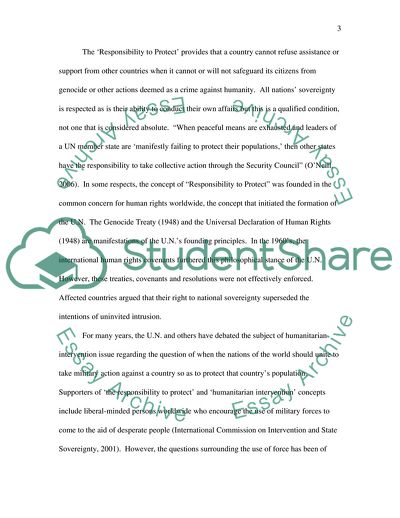Cite this document
(Responsibility to Protect Assignment Example | Topics and Well Written Essays - 1500 words, n.d.)
Responsibility to Protect Assignment Example | Topics and Well Written Essays - 1500 words. https://studentshare.org/sociology/1705383-what-are-the-key-issues-involved-in-the-debates-on-the-responsibility-to-protect-discuss-them-in-relation-to-darfur-sudan
Responsibility to Protect Assignment Example | Topics and Well Written Essays - 1500 words. https://studentshare.org/sociology/1705383-what-are-the-key-issues-involved-in-the-debates-on-the-responsibility-to-protect-discuss-them-in-relation-to-darfur-sudan
(Responsibility to Protect Assignment Example | Topics and Well Written Essays - 1500 Words)
Responsibility to Protect Assignment Example | Topics and Well Written Essays - 1500 Words. https://studentshare.org/sociology/1705383-what-are-the-key-issues-involved-in-the-debates-on-the-responsibility-to-protect-discuss-them-in-relation-to-darfur-sudan.
Responsibility to Protect Assignment Example | Topics and Well Written Essays - 1500 Words. https://studentshare.org/sociology/1705383-what-are-the-key-issues-involved-in-the-debates-on-the-responsibility-to-protect-discuss-them-in-relation-to-darfur-sudan.
“Responsibility to Protect Assignment Example | Topics and Well Written Essays - 1500 Words”. https://studentshare.org/sociology/1705383-what-are-the-key-issues-involved-in-the-debates-on-the-responsibility-to-protect-discuss-them-in-relation-to-darfur-sudan.


